- Clone
- RCR-16 (See other available formats)
- Regulatory Status
- RUO
- Other Names
- Endothelial protein C receptor, protein C receptor, PROCR, activated protein C receptor, APC receptor
- Isotype
- Rat IgG2a, κ
- Ave. Rating
- Submit a Review
- Product Citations
- publications
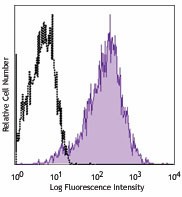
-

Mouse endothelial cell line, bEND.3, was stained with mouse CD201 (clone RCR-16) APC (filled histogram) or rat IgG2a, κ APC isotype control (open histogram).
| Cat # | Size | Price | Quantity Check Availability | Save | ||
|---|---|---|---|---|---|---|
| 141505 | 25 µg | 105€ | ||||
| 141506 | 100 µg | 280€ | ||||
Endothelial protein C receptor (EPCR), also known as CD201, is a 46 kD N-glycosylated type I transmembrane protein, primarily expressed on the endothelial cells of arteries and veins in heart and lung. It is also expressed at high levels on a subset of hematopoietic stem cells and a subset of dendritic cells. CD201 functions as a primary receptor for protein C activation, and results in inhibition of both intrinsic and extrinsic coagulation pathways. It also plays an important role in many pathophysiologic processes, such as inflammation responses to infection, trauma, hematopoiesis, and autoimmune response. Deletion of the CD201 gene in knock-out mice leads to embryonic lethality before embryonic day 10, indicating that CD201 expression is critical for embryo development. In humans, mutations of CD201 have been associated with venous thromboembolism and myocardial infarction as well as with late fetal loss during pregnancy.
Product DetailsProduct Details
- Verified Reactivity
- Mouse
- Antibody Type
- Monoclonal
- Host Species
- Rat
- Formulation
- Phosphate-buffered solution, pH 7.2, containing 0.09% sodium azide.
- Preparation
- The antibody was purified by affinity chromatography and conjugated with APC under optimal conditions.
- Concentration
- 0.2 mg/ml
- Storage & Handling
- The antibody solution should be stored undiluted between 2°C and 8°C, and protected from prolonged exposure to light. Do not freeze.
- Application
-
FC - Quality tested
- Recommended Usage
-
Each lot of this antibody is quality control tested by immunofluorescent staining with flow cytometric analysis. For flow cytometric staining, the suggested use of this reagent is ≤0.5 µg per million cells in 100 µl volume. It is recommended that the reagent be titrated for optimal performance for each application.
- Excitation Laser
-
Red Laser (633 nm)
- Application Notes
-
Additional reported applications (for the relevant formats) include: in vivo and in vitro blocking of protein C binding1.
- Application References
-
- Centelles MN, et al. 2010. Thromb Haemost. 103:1239. (Block)
- Product Citations
-
- RRID
-
AB_2561361 (BioLegend Cat. No. 141505)
AB_2561362 (BioLegend Cat. No. 141506)
Antigen Details
- Structure
- Type I transmembrane glycoprotein, 46 kD
- Distribution
-
Endothelial cells, subset of hematopoietic stem cells, subset of dendritic cells
- Function
- Inhibits blood coagulation, apoptosis, inflammation, endothelial activation
- Interaction
- Protease-activated receptor 1 (Par-1)
- Ligand/Receptor
- Protein C, activated protein C
- Cell Type
- Dendritic cells, Endothelial cells, Hematopoietic stem and progenitors
- Biology Area
- Apoptosis/Tumor Suppressors/Cell Death, Cell Biology, Costimulatory Molecules, Immunology
- Molecular Family
- CD Molecules
- Antigen References
-
1. Kerschen E, et al. 2010. J. Clin. Invest. 120:3167.
2. Iwasaki H, et al. 2010. Blood 116:544.
3. Balazs AB, et al. 2006. Blood 107:2317. - Gene ID
- 19124 View all products for this Gene ID
- UniProt
- View information about CD201 on UniProt.org
Related Pages & Pathways
Pages
Related FAQs
Other Formats
View All CD201 Reagents Request Custom Conjugation| Description | Clone | Applications |
|---|---|---|
| Purified anti-mouse CD201 (EPCR) | RCR-16 | FC |
| PE anti-mouse CD201 (EPCR) | RCR-16 | FC |
| APC anti-mouse CD201 (EPCR) | RCR-16 | FC |
| Biotin anti-mouse CD201 (EPCR) | RCR-16 | FC |
| TotalSeq™-A0439 anti-mouse CD201 (EPCR) | RCR-16 | PG |
| TotalSeq™-B0439 anti-mouse CD201 (EPCR) | RCR-16 | PG |
| TotalSeq™-C0439 anti-mouse CD201 (EPCR) | RCR-16 | PG |
Customers Also Purchased
Compare Data Across All Formats
This data display is provided for general comparisons between formats.
Your actual data may vary due to variations in samples, target cells, instruments and their settings, staining conditions, and other factors.
If you need assistance with selecting the best format contact our expert technical support team.
-
Purified anti-mouse CD201 (EPCR)
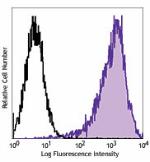
Mouse endothelial cell line bEnd.3 was stained with CD201 (c... -
PE anti-mouse CD201 (EPCR)

Mouse endothelial cell line bEnd.3 was stained with CD201 (c... -
APC anti-mouse CD201 (EPCR)

Mouse endothelial cell line, bEND.3, was stained with mouse ... -
Biotin anti-mouse CD201 (EPCR)
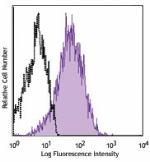
Mouse endothelial cell line, bEND.3, was stained with biotin... -
TotalSeq™-A0439 anti-mouse CD201 (EPCR)
-
TotalSeq™-B0439 anti-mouse CD201 (EPCR)
-
TotalSeq™-C0439 anti-mouse CD201 (EPCR)
 Login / Register
Login / Register 










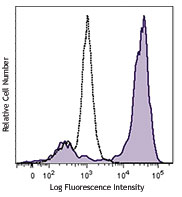
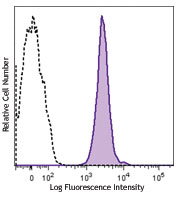





Follow Us